Souvenir Travel Pennants: Rally ‘Round The Flags
By Donald-Brian Johnson
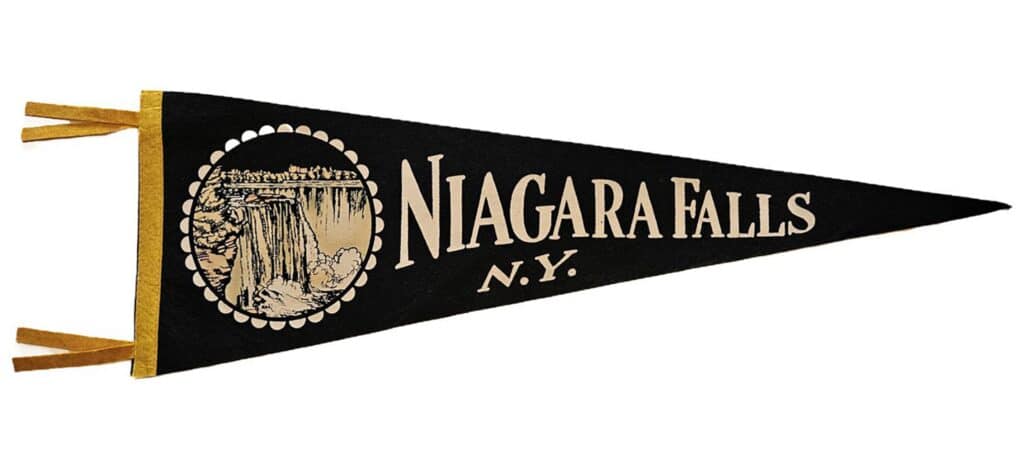
They fluttered from the lances of medieval knights, as horses thundered into battle. They let sea captains know which approaching vessels were warships, and which ones weren’t. Gung-ho college students waved them way back in the Roaring ‘20s. Sports fans have waved them from the late 1800s on. They even made their mark as the occasional state flag (check out Ohio’s two-pointed “swallowtail”).
And, in the mid-twentieth century, when affordable travel made it possible for almost everyone to “see the U.S.A. in your Chevrolet,” pennants really came into their own. Now, you didn’t have to waste time letting folks know where you’d been on vacation. Secured by its handy tassels, the travel pennant flapping from your auto’s aerial told the whole story.
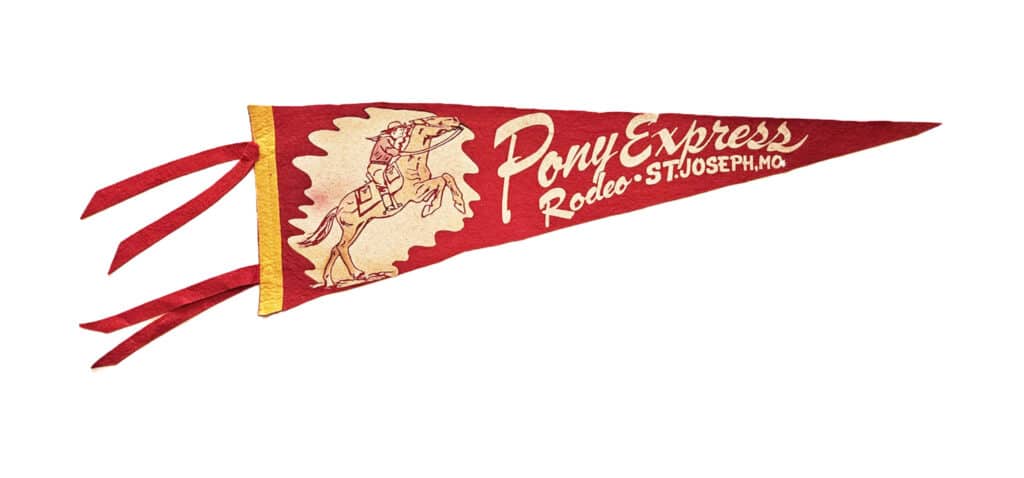
A pennant (from the Latin penna, which translates as “feather” or “wing”), is commonly a triangle on its side, larger on one end (the “hoist,” where it hangs from), than it is on the other (the “fly,” or point). The smallest travel pennants are generally about 12” long; the largest rarely top out at over 30”. Any smaller, and they’d be impossible to read. Any larger, and your aerial would topple.
Felt has long been the traditional pennant material, from “100% wool” at the turn of the twentieth
century, to “100% synthetic” by the 1970s. Lettering and illustrations were originally hand sewn to the felt, making early pennants on the pricey side. Luckily, by the late 1940s, when hordes of Americans hit the road, hand-sewn pennants had given way to screen-printed ones. That put them within easy reach of budget-conscious souvenir hunters.
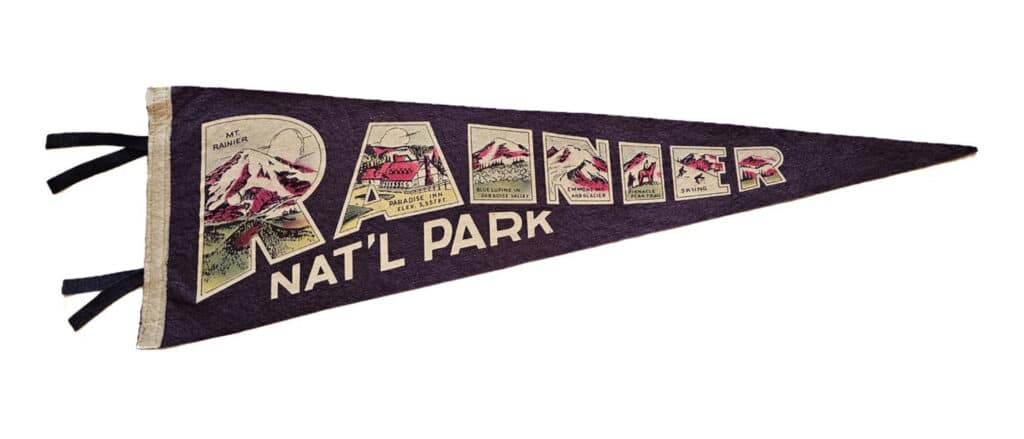
Info on pennant makers is hard to come by, since only the earliest hand-made pennants had labels sewn on the reverse. When mass manufacturing took over, pennant pricing and other pertinent info were printed on a paper label attached to the hoist end. Buyers, of course, tore off those labels after purchase, leaving the pennants shorn of I.D. However, since pennants heralding school sporting teams and events were the precursors of travel pennants, a number of the same companies churned out both. Additionally, many non-school-related pennant providers operated out of New York City’s garment district. Other pennants were produced by businesses specializing in souvenir novelties.
Travel pennant lettering and illustration followed a familiar pattern. At the hoist end was a depiction of the event or attraction being celebrated, with or without a caption. The rest of the pennant was taken up with huge lettering heralding its name. With landmark pennants, the illustration was easy. Been to Niagara Falls or the Black Hills? Well, you’d naturally want a pennant picturing the Falls or Mt. Rushmore.
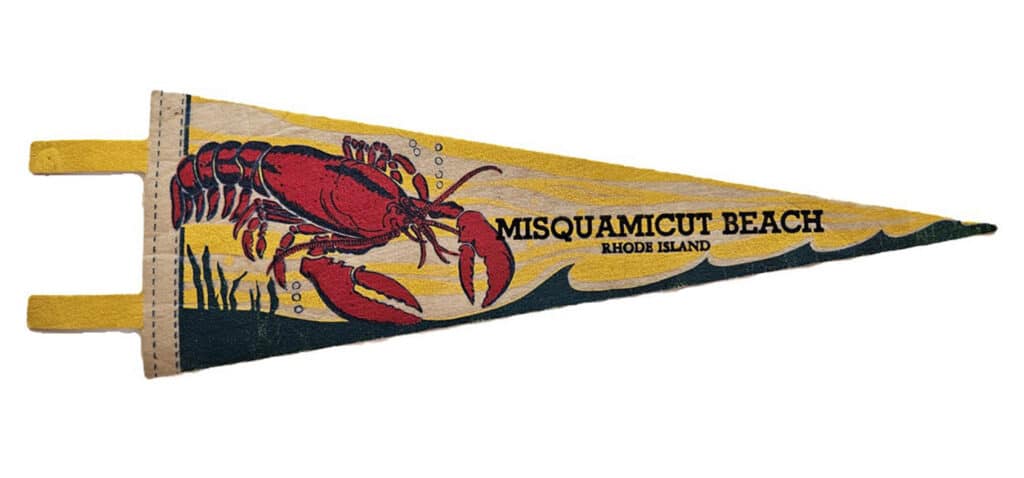
Was your vacation spot known for something specific? How about a Salt Lake City pennant featuring the Mormon Temple, or one for Rhode Island starring a tasty-looking lobster? Some pennant pix were no-brainers. If you’d paid a visit to Colorado’s Buffalo Bill Memorial, your pennant had better show the legendary Colonel himself. And for a bit of whimsy, a pennant marking your trip to Buffalo, New York, featured a rendition of—what else—a buffalo.
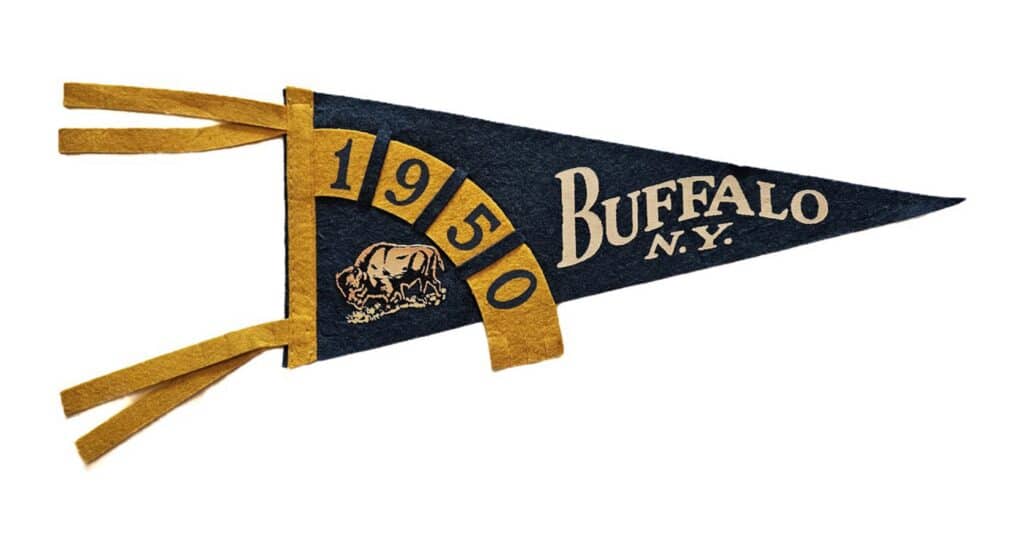
More generic locales called for more generic illustrations. If you’d traveled to the once-Wild West, your pennant choices included plenty of cowboys on bucking broncos, and Native Americans in full regalia. Some pictures call for a bit of head-scratching. A cowboy and bronc on a pennant from Pendleton, Oregon? Sure. A similar scene on a pennant from Burlington, Iowa? Now that’s stretching the Wild West a bit far to the East.
Hunting for a vintage travel pennant may be as close as the nearest dusty family attic or basement, or at any neighborhood estate or garage sale. Chances are good you’ll find at least one pennant at a minimal price. These are the sort of things people didn’t have the heart to throw away—the memories still lingered. Instead, they were packed away, waiting to catch the eye of a future collector. Choices also abound online, with most priced well under $25.
Since the first caveman trudged home from hunting with an unusual-looking rock he’d stumbled over, souvenir collecting has been ingrained in the human psyche. Whatever the experience was, we want evidence we can hold on to. Yes, we were actually there. Yes, we actually did that. For folks in mid-century America, travel pennants were souvenirs to be treasured, tangible reminders of personal Grand Tours. Like old friends, they could always be called upon in the future to help recapture happy visions of the past. Long may they wave!
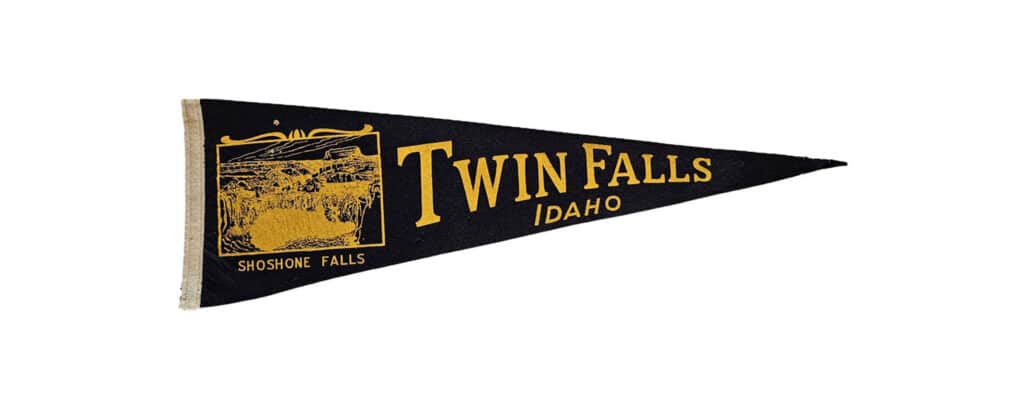
Pennants courtesy of Maureen Maher. All photos by Hank Kuhlmann
Donald-Brian Johnson is the co-author of numerous books on design and collectibles, including “Postwar Pop,” a collection of his columns. Please address inquiries to: donaldbrian@msn.com


